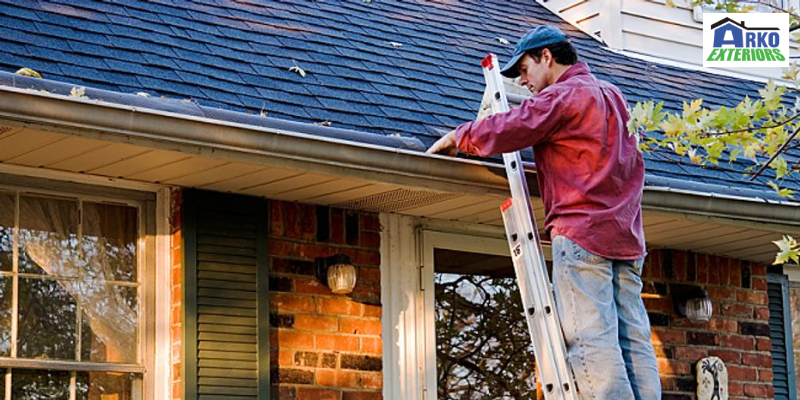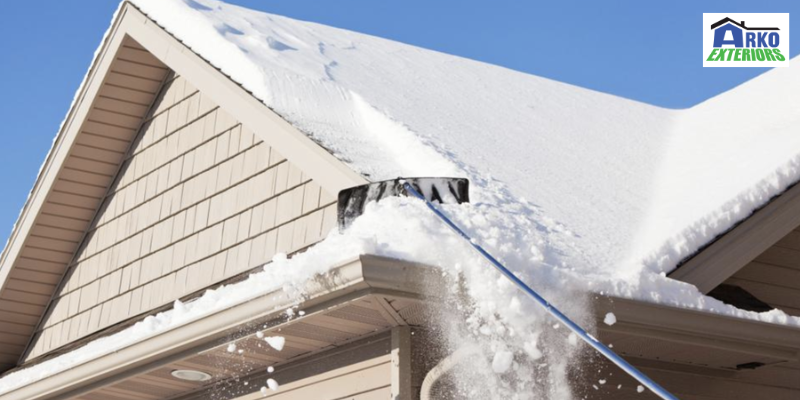When heavy snow accumulates on a flat roof, the damage from it could be irreparable and/or fatal. However, if you have the right ice melter for roofs, you needn’t worry. What are some tips for preventing snow damage to your flat roof? Here are some…
#1 Cleaning storm drains

Snow accumulation is one thing, but failing to properly empty your storm drains is quite another.
Storm drain clogs brought on by autumn leaves and other debris can prevent snow from melting and flowing. In addition, flat roofs coated in 3 to 4 inches of snowfall due to severe snowfall are covered in snow.
Before snowfall, clean out the gutters or storm drains to prevent seepage and preserve your walls and roof.
#2 Spread deicers
Applying an eco-friendly deicer, like Safe Paw, in advance of a snowstorm is a smart idea.
Deicers make it simpler to afterward remove the ice by preventing it from adhering to the surface. Additionally, there are safe ice melters for rooftops that might help you with your concrete safety concerns.
#3 Insulating the ceiling
Install insulation on the underside of the roof deck or attic to prevent long-term damage to your walls and roof.
To establish an efficient insulation system throughout your attic and house, you can contact insulation specialists for assistance.
The heat from the insulation system will aid in melting ice, keeping your flat roofs clear of snow.
#4 Foam insulation on the roof
You can use firm foam or roof deck insulators, similar to how you insulate your home from the inside, to keep snow off your roof.
Snow can be removed more quickly and won’t stick to the roof’s surface thanks to insulation roof panels. To properly install insulated roof decks, we strongly advise getting in touch with your local roofing expert.
#5 Inspect for previous damage
You have a good possibility of eventually finding puddles or specific roof problems.
Before a snowstorm or blizzard, call in the professionals to inspect for damage and make any necessary repairs. To prevent long-term harm, it is necessary to maintain readiness and checks & balances.
#6 Clear downspouts and gutters

Clean out all gutters and downspouts as you conduct your annual fall cleanup. At least one drain hub should be present on your flat roof. Call your roofing provider for assistance if you see pooling or clogs.
When melted snow turns to water and has nowhere to go if your drains are clogged with leaves, twigs or other debris, a leak may result. Ice dams and other more dangerous issues could result from blocked drains.
#7 Lookout for puddles
Although little roof sags can be difficult to see with the naked eye, they typically indicate major problems. After it has rained, look for any water pools. Because every flat roof has a tiny pitch, puddles shouldn’t ever develop. If you notice any puddles, you should probably call a roofer to fix the issue.
Next, look for caulking faults at the flashing where your walls meet your flat roof. Contact a roofing company if you see any gaps. Sometimes buildings naturally shift, necessitating additional caulk at the seams.
Most flat roofs can have their lifespans extended using the techniques above. But residents of colder regions might avoid leaks by clearing snow off their flat roofs after a snowfall. Shovel as soon as the weather has passed to avoid having an icy roof.
Summary:
Do you have a flat roof and you’re worried about it this winter? Call Arko Exteriors at 763-434-2756 for all your flat roof needs or concerns.

